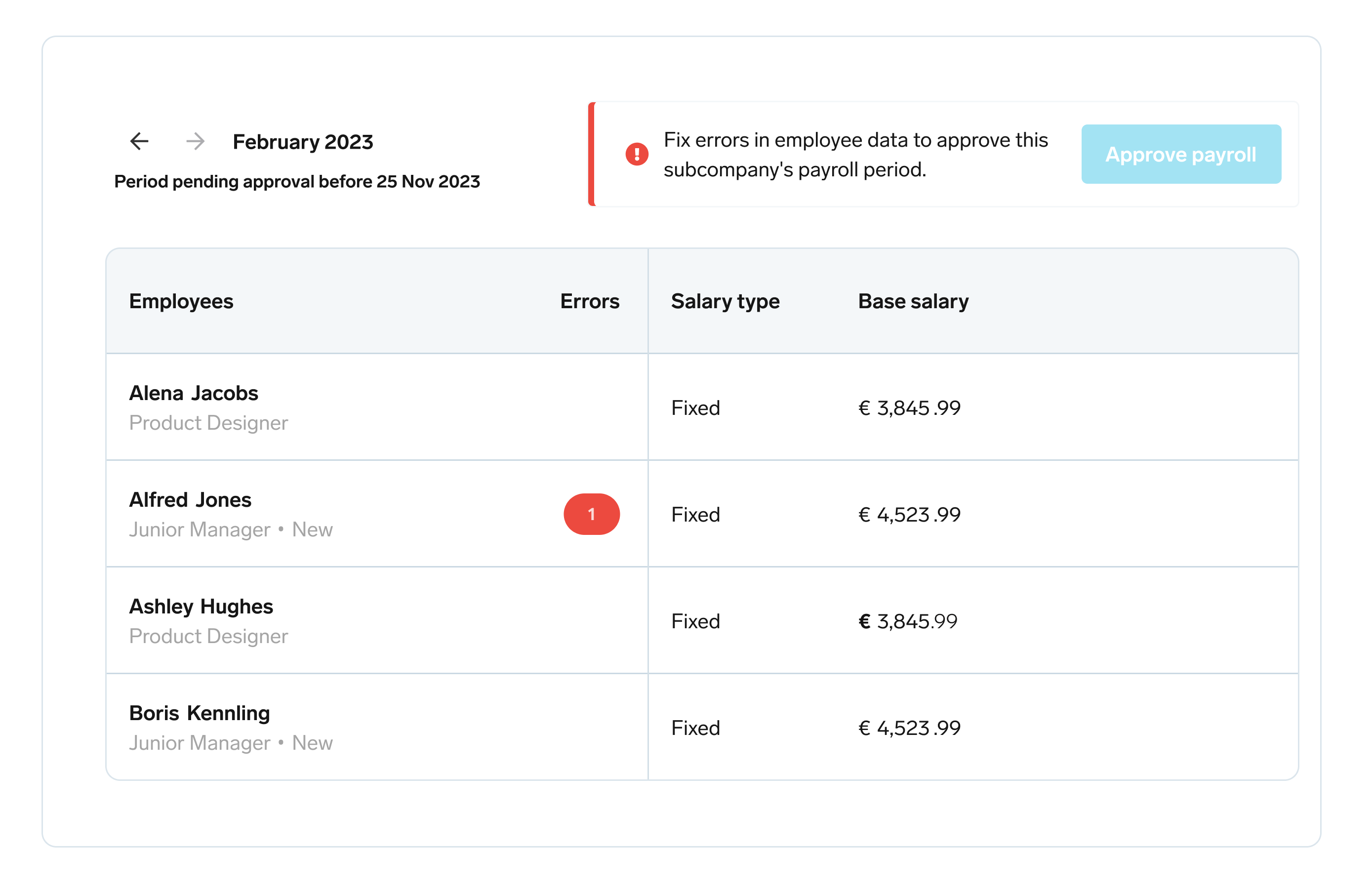
Integrate payroll with HR management
Integrate payroll processes seamlessly with Personio's comprehensive HR management platform.
Explore our productSeverance Pay In The UK: The Complete Guide

What is severance pay? And, how is it different from redundancy pay? While it might not be the happiest subject to cover, it is key for operational effectiveness and learning how to manage it as part of your company's HR function.
In this article, we will cover some basic definitions, differences, and some of the laws that surround severance pay packages, termination pay, and layoff packages in general.
Automated onboarding (and offboarding) with Personio.What Is Severance Pay?
Severance pay, as part of a severance package, is offered to an employee, by their employer, at the end of their employment. It may also include some additional employee benefits, like health insurance, to help an employee secure a new role in the near future.
In many cases, a severance package or a layoff package may be used as an alternative to a redundancy package. At a glance, here is how severance may usually be constructed:
Typically Includes | Additional Inclusions |
|---|---|
Statutory redundancy pay | Pension payments |
Payment in lieu of notice | Stocks or shares |
| Additional employee bonuses |
| Other discretionary amounts |
Keep every stage of the employee lifecycle sharp. Discover Personio today.
Is Severance Pay Legal?
In UK law, ‘severance’ is not a legal word. Employers typically give it the same meaning as redundancy, but it is used in a different – but crucial – way. While there are many governmental and legal obligations that employers must follow in the UK if they make one or more employees redundant (our helpful article on redundancy pay provides more detail on this), severance pay is a bit more ‘fast and loose’ with the rules.
The legal firm Thomson Snell & Passmore says, "A severance package offer is usually made with the condition that employees enter into a settlement agreement which will require them to give up all their legal rights to pursue their employer for a claim or claims in an employment tribunal, including any claim for contractual entitlement to bonus, shares, commission, accrued holiday, and unlawful deduction of wages".
Checklist: Ensure a seamless offboarding

Don't let departures damage your reputation, and ensure smoother employee exits with our structured offboarding checklist. Download it today.
Download The Checklist NowAre Severance Pay & Redundancy Pay The Same Thing?
Let’s break it down…
Redundancy Pay | Severance Pay |
|---|---|
Legislated pay for an employee being made redundant | Compensation to an employee due to loss of benefits |
Agreed upon publicly and by the letter of the law | Agreed upon privately between employee and employer |
A basic amount due to an employee upon being made redundant | Augmented by bonuses, commission payments, shares, options, and more |
Here’s everything employees and employers alike need to know about redundancy pay.
What Does UK Law Say About Severance Pay?
While the term is commonly used in the United States, the use of severance pay in the United Kingdom is often quite ambiguous. Normally, it refers to a payment made to an employee by an employer in return for them agreeing to leave without pursuing a claim against the business.
When a voluntary severance package is offered, employees are expected to sign a voluntary severance agreement. This protects employers, to a large extent, from claims of unfair dismissal as employment tribunals are unlikely to accept that employees were dismissed if they signed the agreement.
Does that differ from voluntary redundancy? Read our guide to find out.
Do Employers Always Have To Pay Severance Pay?
The short answer is ‘no, not usually’. A severance pay package is usually negotiated with employees who earn a lot of money, have a lot of benefits, or who the company wants to usher out of the business as quietly as possible. If in doubt, though, refer to the legislation around redundancy pay and stick to those rules instead.
Four Severance Pay Examples To Consider
Severance Pay Example #1
One example of when severance pay might be used is when the business would prefer not to go through a lengthy, formal grievance or disciplinary procedure to get an employee to leave.
A severance pay package might be offered to a salesperson, for instance, who has not performed to the required level. However, if it is hard to obtain documentation to confirm this, or if the employer and employee disagree about what ‘the required level’ might be, the business and the employee might agree to negotiate a layoff package or severance package that satisfies both parties.
Severance Pay Example #2
Severance packages might also be offered to senior leaders when the business makes management changes and they ask an employee to leave, but the business would prefer not to go through formal redundancy procedures.
In cases like this, government-legislated redundancy pay would not be sufficient to cover the salary and benefits that a senior employee will lose, so the company issues a layoff package to cover the amount of their loss of work for an extended period of time.
Considering that senior staff typically have a much longer notice period (between three and 12 months), a severance pay package may pay them out in part or in full for the salary, bonus, leave, and benefits they would receive during all or part of that notice period.
Read our full guide to voluntary redundancy by clicking right here.
Severance Pay Example #3
Severance pay packages are also sometimes issued when employees leave but have a lot of insider knowledge that could be valuable to a competitor.
A severance pay package may be issued to cover a certain number of months of them not working, on the assumption (and this can also be written into the severance pay agreement) that they will not work for a competitor during this time. In this sense, it is somewhat akin to garden leave (but still quite different).
Severance Pay Example #4
Severance pay is also issued by some companies if they want to be more generous to the employees they make redundant, perhaps because of their length of service, or because the business would prefer to ease their departure as much as possible.
Automate Your Offboarding

Give departing employees a smooth goodbye. Automatically assign departing employees detailed offboarding tasks with clear deadlines.
Try Smarter OffboardingWhat Should HR Leaders Know about Severance Pay?
Worksmart says that when employees accept an offer of voluntary redundancy which requires them to leave work immediately, employers must ensure they are paid out for their notice pay and their severance/redundancy payment.
Employees must also be paid for any holiday that they have earned but not taken by their leaving date. When making severance payments don’t forget that tax and national insurance must be deducted from all notice pay and payments in lieu of notice.
It’s also wise to ensure that employees sign a voluntary severance agreement before they are paid out. You may also want to include a confidentiality clause in the severance agreement so that the terms of the severance package are not shared with other parties.
Paying Your Employees Made Simple
In conclusion, while an employee’s departure from the business can be stressful for everyone involved, a generous severance pay package can help both parties. It can help employers feel that they have been as fair as possible and help employees be more financially secure as they move on to whatever activity they choose to embark on next.
Disclaimer
We would like to inform you that the contents of our website (including any legal contributions) are for non-binding informational purposes only and does not in any way constitute legal advice. The content of this information cannot and is not intended to replace individual and binding legal advice from e.g. a lawyer that addresses your specific situation. In this respect, all information provided is without guarantee of correctness, completeness and up-to-dateness.
